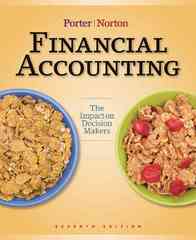Suppone the expected retums in the coonomy are best explained by a two-factor APT model. The first factor is a proxy for the portfolio of investor wealth that includes investments in the stock market, bond market, and real estate. The expected return to the first factor is 4%. The second factor is a proxy for your investment in human capital and its expected return is 8%. The risk-free rate is 2%. Unfortunately, these two factors are not traded assets, but you do observe four well diversified portfolios, A, B, C, and F, with the following factor sensitivities (betas) and expected returns. B 1.2 Factor 1 betas Factor 2 betas 1.1 0.5 7.2% 1.3 0.7 8.8% F 0 0 2.0% 1.6 16.0% 10a. There is an arbitrage opportunity, using only portfolios A, B, C, and F. Describe the arbitrage strategy per $1 long or short in portfolio F. You need to calculate dollar positions for each of the assets A, B, C, and F, so that your position in F is either +$1 (if long) or -$1 (if short). You will also have positive (if long) or negative (if short) dollar positions dollars for the other assets A, B and C. Write these dollar positions for A, B, and C in the corresponding labelled blanks on the template. Be sure to include a negative sign for any short position. Note: Remember, you cannot use the factors as portfolios. They are not truded assets. You must only use A, B, C and F Show your work to justify your strategy! [7 marks] 10b. Calculate the profit to the strategy you describe in 10a. How much can you earn per SI long or short in portfolio F [3 marks] Suppone the expected retums in the coonomy are best explained by a two-factor APT model. The first factor is a proxy for the portfolio of investor wealth that includes investments in the stock market, bond market, and real estate. The expected return to the first factor is 4%. The second factor is a proxy for your investment in human capital and its expected return is 8%. The risk-free rate is 2%. Unfortunately, these two factors are not traded assets, but you do observe four well diversified portfolios, A, B, C, and F, with the following factor sensitivities (betas) and expected returns. B 1.2 Factor 1 betas Factor 2 betas 1.1 0.5 7.2% 1.3 0.7 8.8% F 0 0 2.0% 1.6 16.0% 10a. There is an arbitrage opportunity, using only portfolios A, B, C, and F. Describe the arbitrage strategy per $1 long or short in portfolio F. You need to calculate dollar positions for each of the assets A, B, C, and F, so that your position in F is either +$1 (if long) or -$1 (if short). You will also have positive (if long) or negative (if short) dollar positions dollars for the other assets A, B and C. Write these dollar positions for A, B, and C in the corresponding labelled blanks on the template. Be sure to include a negative sign for any short position. Note: Remember, you cannot use the factors as portfolios. They are not truded assets. You must only use A, B, C and F Show your work to justify your strategy! [7 marks] 10b. Calculate the profit to the strategy you describe in 10a. How much can you earn per SI long or short in portfolio F [3 marks]







